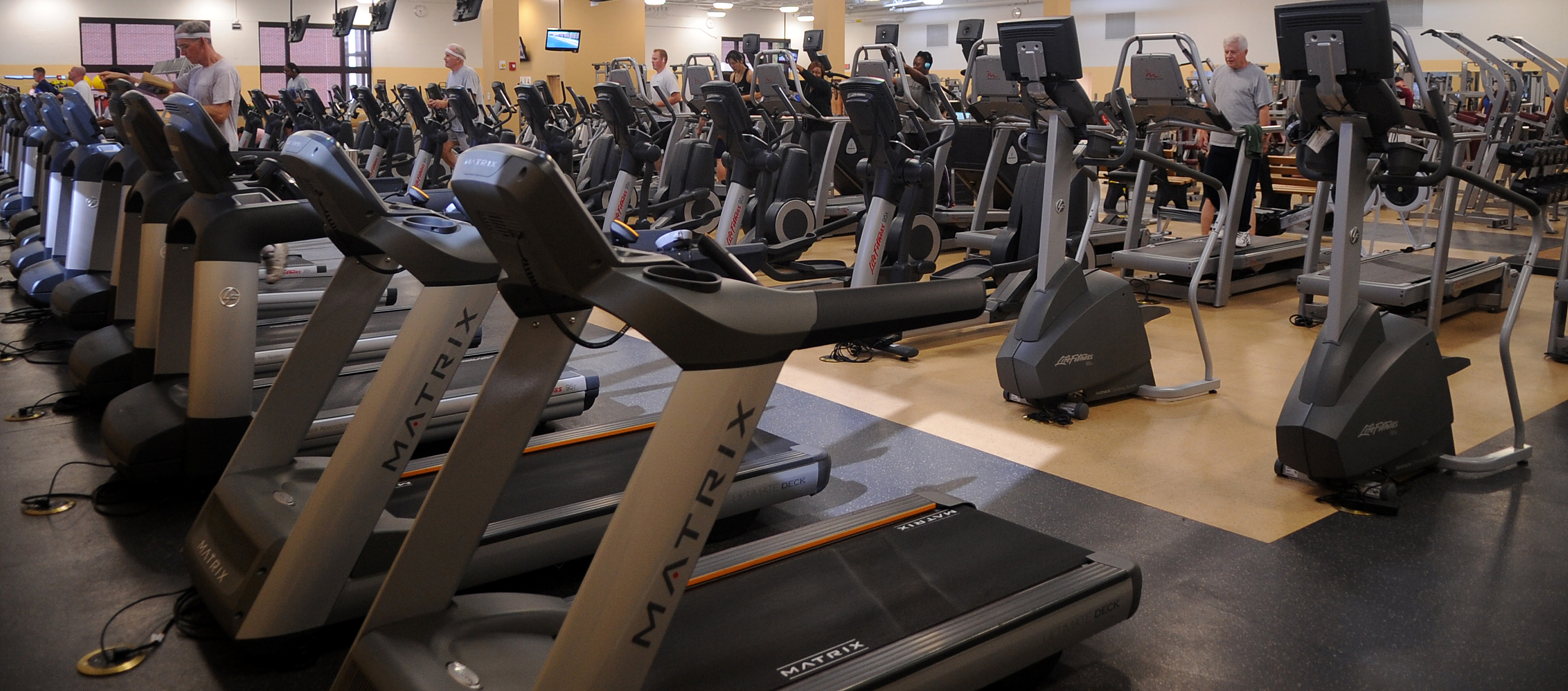KILTED! is a philosophy that I developed to help guide my quest for better health. KILTED! Can be summarized by 7 simple principles that are crucial if you want to make a transformational change in your life. Today we move to the fourth principle: Trek Out.

The basic equation of weight loss, INTAKE – OUTPUT = WEIGHT GAIN / LOSS is covered in the post on Weight Loss Basics. If you haven’t done so already, I really suggest you take a look before continuing on here. While Principle #2 deals with the intake portion of the above equation, Principle #3 and Principle #4 deal with output.
Aerobic exercise, or cardio for short, is the cornerstone of most fitness plans. Cardio involves raising your activity level to increase your heart rate and increase the flow of oxygen to your muscles (aerobic means “relating to, involving, or requiring free oxygen”). When done right, aerobic exercises involve low-level, repetitive motions where your muscles are working below 50% of their maximum capacity, but done over an extended time so that your heart is working above 50% of its maximum capacity.
Cardio is kind of like strength training for your heart muscle – a stronger cardiovascular system leads to more capillaries which can deliver more oxygen to your muscle cells. This in turn enables your cells to burn more fat during both exercise and inactivity.
I’ll begin with some details on cardio, before moving on to why this principle called “Trek Out.”
Common Examples of Cardio
Given the definition above, there are hundreds of ways to perform cardio but there are several which stand out as the easiest and the most likely to begin with. Some of them require little or no equipment, and others require minimal equipment which is readily available at all gyms and most community fitness centers.
Walking is probably the easiest and safest way to begin a cardio routine. As an added bonus, the only equipment concerns are a good pair of comfortable athletic shoes which everyone probably already has (unless you decide on a treadmill to walk indoors). The best way to start is to make opportunities to incorporate more walking into your daily schedule – for example, park at the far end of the parking lot to walk a greater distance to work or the store. For best effects, you should walk at a moderate pace for at least 30 minutes, with some sources recommending 45 minutes to an hour for consistent weight loss.
Running has all the benefits of walking except that by going faster the exercise is more intense. For many, this is their go-to form of cardio, although it is higher impact than walking thus brings a higher risk of injury. However, it also provides a greater return for your effort, burning approximately twice the energy or walking. Good shoes are critical for running. They along with running on grass or dirt tracks can lessen the possibility of injury.
Jumping Rope is another cheap and easy way to burn lots of calories and it provides a full body workout, but the jumping can be too high impact for some. Jump ropes readily available and probably the cheapest piece of exercise equipment you could find anywhere. In a pinch, a section of rope is just as effective.
Swimming provides a total body workout and provides more emphasis for the upper body than walking or running. You can burn calories simply by treading water, but it is best to swim laps and to change strokes frequently to work different muscle groups. Swimming is very low impact and is ideal for those who are overweight, pregnant, or suffer from joint problems. Unfortunately, swimming tends to burn less energy that running or walking. Community pools are common in most areas and many gyms or YMCAs have them as well.
Bike Riding or Cycling focuses on the leg muscles and can elevate your heart rate just as easily as walking or running depending on your speed. Cycling has a great advantage of being low impact on the joints as well. You can use a stationary bike at the gym, or ride your own bike for exercise or even use it as an eco-friendly mode of transportation. Cycling can get pricey as it does require equipment and a bike can run anywhere from around $100 into the thousands (and with bikes, you do get what you pay for).
Ellipticals are probably the most common exercise machines at gyms after the treadmills. They provide a lower impact workout that walking or running (vs. treadmills) and can work more muscles because they also allow for a reverse stride. Ellipticals also have a psychological advantage as studies have shown that their users are usually working harder than they perceive their effort to be. In the long run, ellipticals can burn as many calories as running but has a lower impact on the knees and hips.
Stair Climbers use more muscles than simply walking and can be a good calorie burner. Stair climbing is one of the most strenuous forms of aerobic exercise, but the extra effort pays off with faster weight loss than most other forms. If you don’t have a gym membership or a lot of space for your own stair climbing machine, a cheaper option can be provided by any multi-story building you can gain access to.
Rowing works the upper body and abdomen, and depending on the style can even work the lower body. It offers a low impact alternative to running or cycling. Despite being low impact, rowing tends to have a higher chance of injury, specifically because it requires good technique. Most gyms will have at least one rowing machine and if you live in the right area you can join a rowing club or rent a boat on your own.
With many of these activities, especially running, cycling and rowing, your pace is important. When running, for example, your muscles burn proteins and fats at a jogging pace. But sprinting crosses the line into anaerobic activity where your muscles burn glucose instead of fats and proteins and also produce lactic acid as a by-product which causes muscle fatigue.

Benefits of Cardio
There are many benefits to those who engage in sufficient cardio. First and most obviously, cardio leads to weight loss which is the main reason that most people begin a regimen of cardiovascular exercise. Cardio also strengthens the heart by teaching it to work more efficiently which in turn reduces your resting heart rate. This will both lower blood pressure and reduce the risk of developing heart disease. Regular cardio can also strengthen the lungs and improve lung capacity as they are also forced to work more during exercise.
Exercise releases endorphins, natural pain killers, which will reduce stress and depression. Even though it may not seem like it, exercising helps to increase your energy level and allow you to be more active. Being more active will also help you sleep better at night as we tend to sleep better when we wear ourselves out during the day. Finally, those who exercise will not only live longer but they will also age better as they will maintain bone density, decreasing their risk of osteoporosis, and better maintain muscle mass.
Cardio is My Nemesis
For cardio, lots of people join a gym and hit the treadmills or the ellipticals. When I got a free Gold’s Gym membership from a previous employer, I thought it would be great. Within the first week, I went one day after work, and found my manager there. We hit the treadmills together, and I hated it. Part of the reason is that he was a runner, so he was obviously going to do better than me on the treadmills and I found it discouraging. The other reason is because, as I have said before, I Can’t Run.
I prefer biking over running, so I thought I’d try out the stationary bikes. In the gym they call this spinning and for some inexplicable reason often accompanied by loud music and flashing lights. Unfortunately, I hated it too. I figured it might be the gym environment.
Lacking a good place to ride my bike at the time, I dropped $100 on a stationary trainer that I could mount my old Trek bike to provide resistance to the rear wheel. This would allow me to “ride” in the house and get a lot of cardio. I figured it would also work well to ride while watching TV and at times suggested that I would only play Skyrim while riding the bike. This device, while good in theory, had its problems. It made a lot of noise so it wasn’t always practical to watch TV – and I never biked while playing Skyrim. It also created a lot of friction, and in minutes you could see that the tire was melting onto the resistance wheel. So, the bike stayed mounted to the trainer for 5 years and was used maybe 2 or 3 times. Another failure.
What I quickly realized is that I much prefer to be outdoors. My wife may laugh at that statement since I never seem to want to go out and mow the lawn, but that’s a totally different thing in my book.
So, Why “Trek Out?”
Since it deals entirely with cardio, why isn’t this principle called cardio, or aerobic exercise? Besides the fact that there is no “C” in KILTED!, the core concept of Trek Out isn’t about what you do for cardio or how you do cardio. It relies entirely on where you do cardio. For details, see Trek Out Part 2.
Be sure to read all 7 of the KILTED! Principles and don’t miss Get KILTED! for more related links:
Principle #1 – Kill Excuses
Principle #2 – Improve Diet
Principle #3 – Lift Weights
Principle #4 – Trek Out
Principle #5 – Expand Knowledge
Principle #6 – Don’t Quit
Principle #7 – Get Excited

1 Comment
Comments are closed.